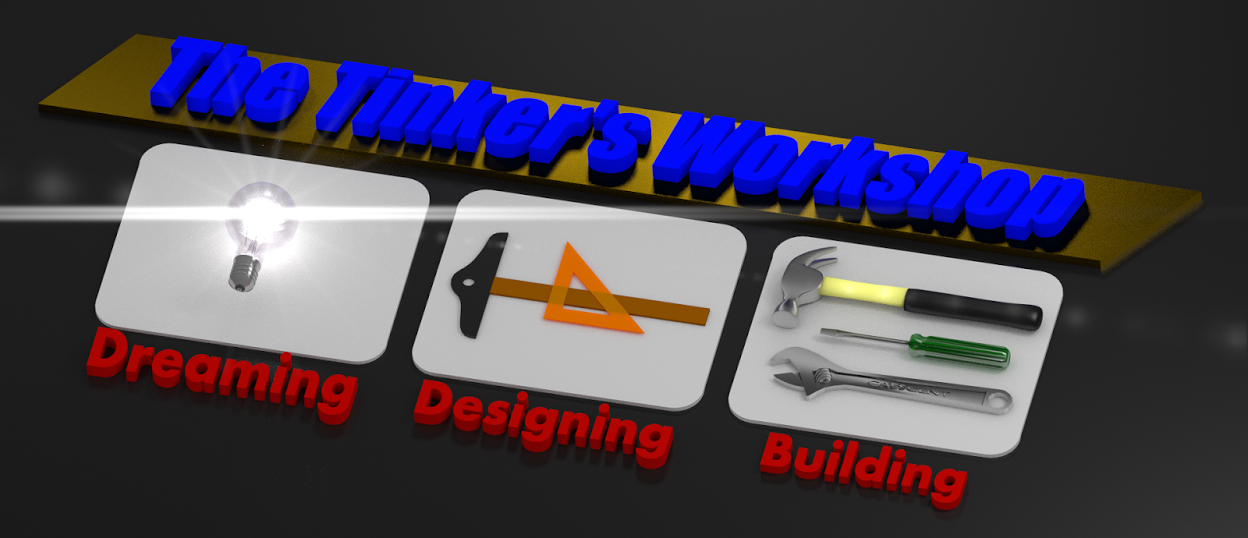Another very cold day here at the Tinker's Workshop so the order of the day is to continue working on the Lego Man Gyrocopter project. I spent most of yesterday just printing parts for the engine and finishing up parts for the wheels so today I assembled everything for this post to show you how it all went together.
This is just one half of one of the wheels. It has two of everything that you see here to make up an entire wheel. All of the parta are then snapped together and the two halves are then sanded smooth where they meet and are glued together using regular modeling glue.
This is all three wheels once they have been assembled. I really like the yellow and red as it a nice bright combination for the project.
This gives you a good idea of the scale of the model with one of the rear wheels in my hand.
Here are all of the parts that were needed to put the engine together for the gyrocopter project. 29 parts in all. Starting at the upper right corner are the velocity stacks. Then the engine block which took four hours alone to 3D print. The silver and black pins are locating pins for the cylinder heads. To the left of these parts are the carburetors. Just below them are the black exhaust pipes which will be glued together to make a tubular shape for the pipe. The two yellow peanut shaped parts are the valve covers and again to the right are yellow elbow shaped pieces that will make up the carburetor tubes. The last four black finned pieces make up the cylinder heads.

Here is the assembly of one of the cylinder heads. The silver cylinders are 1/4 aluminum rod that is mounted between two halves of the cylinder head. I needed to add a small strip of black tape to the rods as my holes for the rods were just a little to large. The tape solved this problem and saved me from having to reprint the heads. The two halves of the cylinder hears were glued together using plastic glue.
Next the velocity stacks were glued into place on the carburetors. I had to print the carburetors in two pieces as this was the simplest thing way to go to get the shape I was looking for.
I then added the valve covers to the cylinder heads and mounted them to the engine block. The protrusion on the end of the engine will be where the propeller will be mounted on the gyrocopter.
Now the engine is starting to take shape with the carburetors mounted to the assembly along with the carbureator tubes. I really like how everything fit up so nicely.
The last thing to install on the engine other than the propeller was the exhaust on both sides. The engine at this point is 3 1/2 inches long, 4 1/2 inches tall and 5 inches wide.
Now with the six inch diameter three bladed prop the motor really stands out for the project. I only have to mount the engine permanently to the gyrocopter and this part of the project is done. Total hours on the project so far has now risen to 35 hours plus 108 parts and still counting. Time flies when your having fun and this is a good time for me.
I find with the assembly a couple of issues that I may have to look at in the coming days. One is the main axle for the gyrocopter itself. I had to re-glue one of the aluminum pins for one of the main wheels today as it did not hold properly. Hopefully I'll have the problem fixed in short order and I can move forward with the project. If not I will have to do a bit of redesign to work out the problem. Like anything else in design changes are expected. Hopefully this will not be a big problem but you just never know. So far the progress is steady and the results especially for the engine and the rest of the build have been worth the effort once again. Stay tuned for more updates and enjoy the photos.




